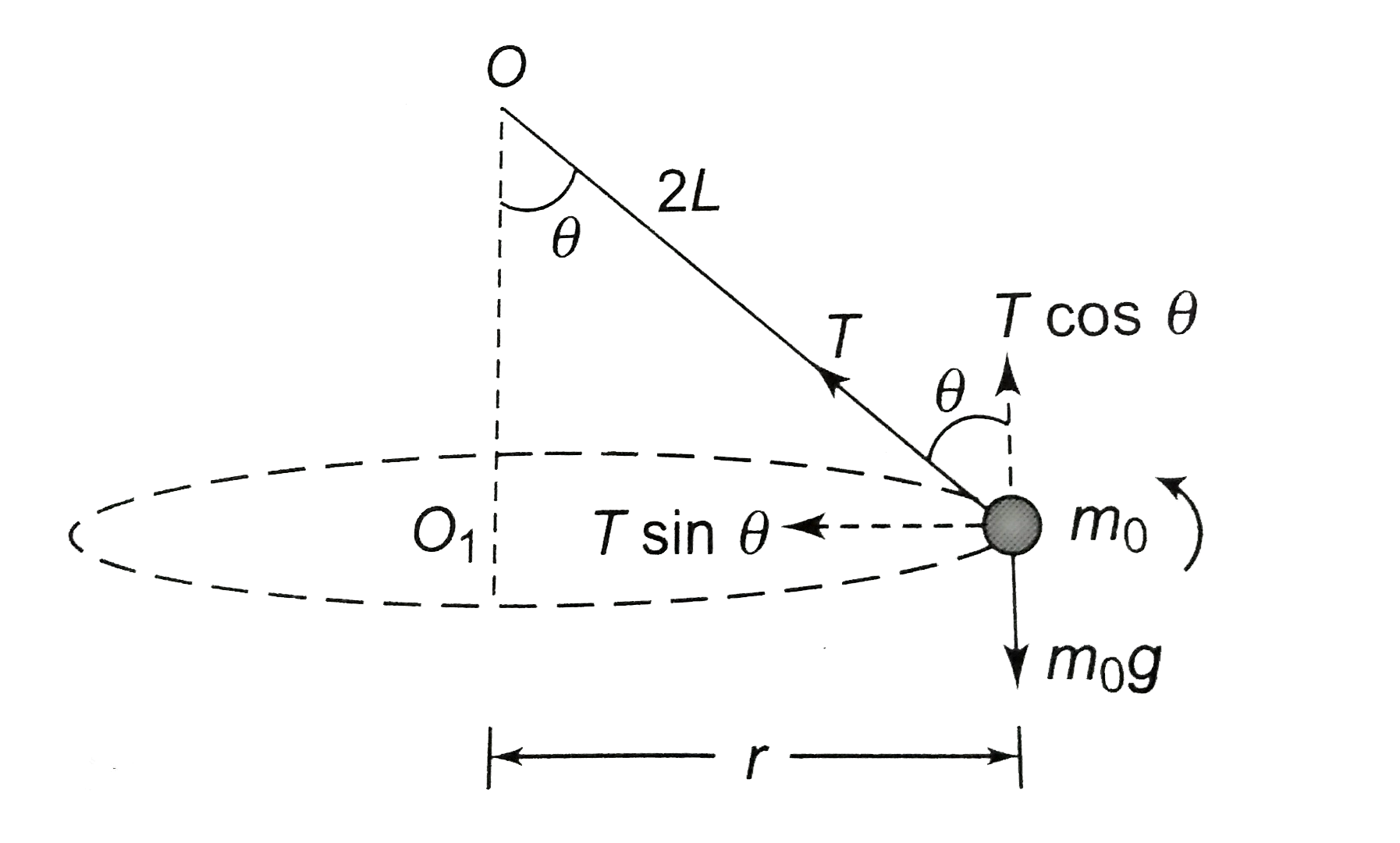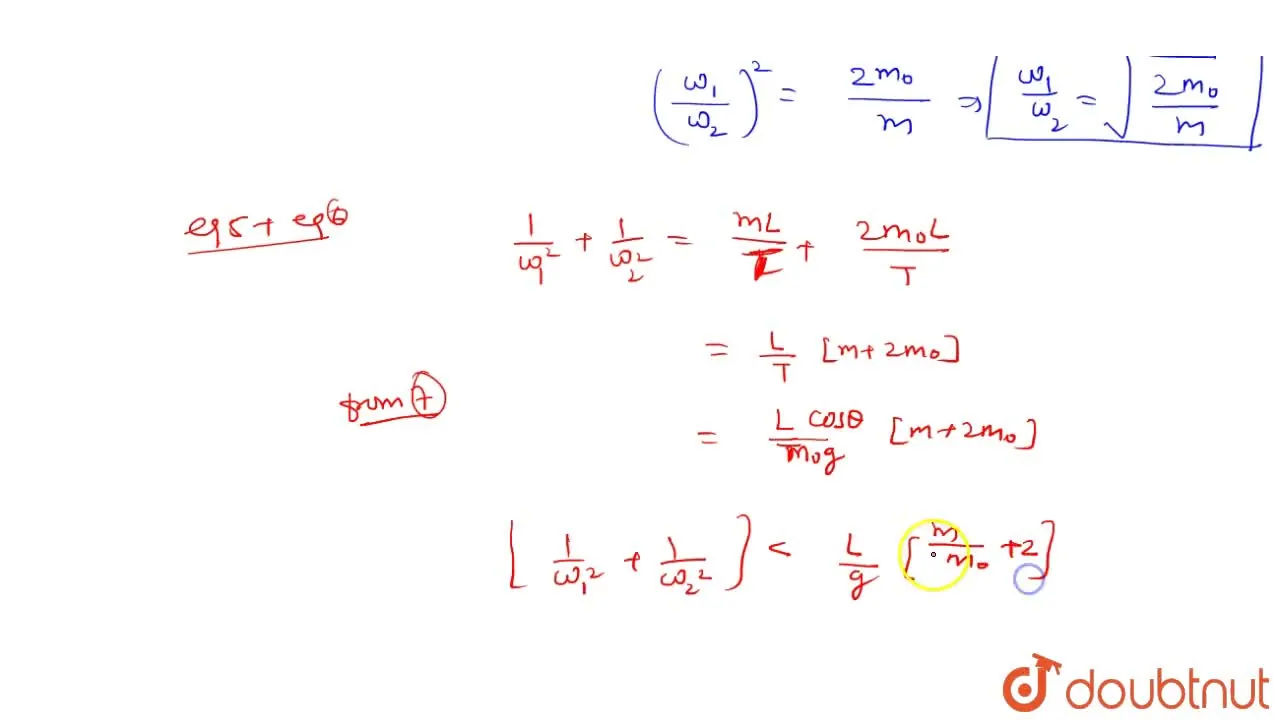A particle of mass m is attacted to one end of string of length 3L. The particle is on a smooth horizontal table. The string passes through a hole in the table and to its other end is attached to a small particle of mass m0. The particle describe horizontal circular motion with angular velocity ω1 and ω2. find the value of (a) ω1ω2 and (b) the value of (1ω21+1ω22).

For the block on table: T=mω−(1)2L …..(i)
For hanging mass: sinθ=r2L ….(ii)
Tcosθ=m0g …(iii)
Tsinθ=m0ω22r …..(iv)
Tsinθ=m0ω222Lsinθ
T=m0ω222L .....(v)
Equating (i) and (v), we get
mω21L=m0ω222L
ω21ω22=2m0m⇒⎛⎜
⎜
⎜
⎜⎝ω1ω2=√(2m0m)
From (i), 1ω21=mLT
From (v),1ω22=2m0LT
1ω21+1ω22=LT[m+2m0]
From (iii), T=m0gcosθ
1ω21+1ω22=Lcosθm0g[m+2m0]
Since cosθ<1,therefore
(1ω21+1ω22)<Lg[mm0+2]


Related Playlists
Similar Questions
A particle of mass m is attached to one end of a weightless and inextensible string of length L. The particle is on a smooth horizontal table. The string passes through a hole in the table and to its other and is attached a small particle of equal mass m. The system is set in motion with the first particle describing a circle on the table with constant angular velocity ω1 and the second particle moving in the horizontal circle as a conical pendulum with constant angular velocity ω2 Show that the length of the portions of the string on either side of the hole are in the ratio ω22:ω21
View SolutionA particle of mass m is suspended from the ceiling through a string of length L. The particle moves in a horizontal circle of radius r. The speed of the particle is
View SolutionA particle of mass m is tied to a string of length L and whirled into a horizontal plan. If tension in the string is T then the speed of the particle will be :
View SolutionA particle of mass m is attached to one end of a string of length l while the other end is fixed to a point h above the horizontal table. The particle is made to revolve in a circle on the table so as to make p revolutions per second. The maximum value of p if the particle is to be in contact with the table will be :
View SolutionA particle of mass m is attached to one end of string of length l while the other end is fixed to point h(h<l) above a horizontal table. The particle is made to revolve in a circle on the table so as to make p revolutions per second. The maximum value of p, if the particle is to be in contact with the table, is : (l>h)
View SolutionA particle of mass m is suspended from a ceiling through a string of length L. The particle moves in a horizontal circle of radius r such that r =L√2. The speed of particle will be :
View SolutionOne end of string of length l is connected to a particle on mass m and the other end is connected to a small peg on a smooth horizontal table. If the particle moves in circle with speed v the net force on the particle (directed toward centre) will be (T reprents the tension in the string):
View SolutionA particle of maas m is attched to a light string of length l, the other end of which is fixed. Initially the string is kept horizontal and the particle is given an upwrd velocity v. The particle is just able to complete a circle
View SolutionA block of mass 1kg is tied to a string of length 1m the other end of which is fixed The block is moved on a smooth horizontal table with constant speed 10ms−1. Find the tension in the string
View SolutionFind the angular momentum of a particle of mass m describing a circle of radius r with angular speed ω.
View Solution


